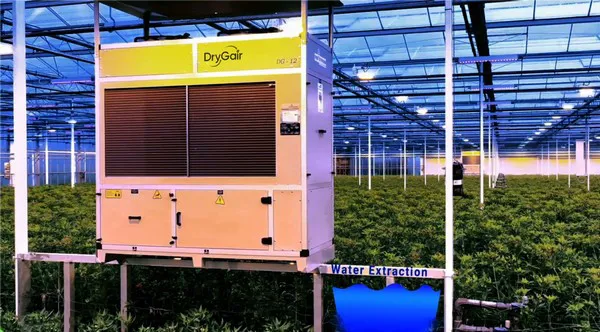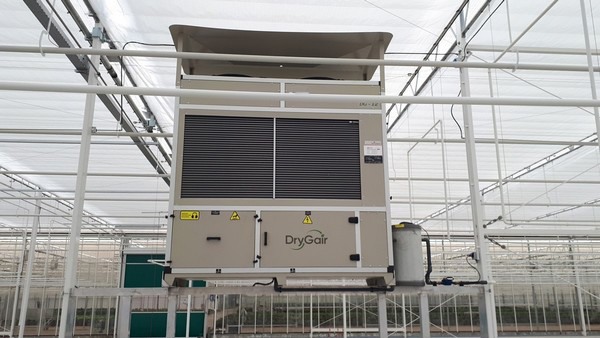There’s no doubt that the recent drought experienced across Europe is a massive cause for worry for growers. Water availability and pricing have a huge impact on the ability to grow and maintain profitability, and many growers already feel this.
Droughts like these are likely to happen more and more frequently. That means water-intensive sectors, such as greenhouses, may have to rethink their relationship with water, from sourcing, through storage to reuse.
The challenge of water availability is a big one, and there’s no simple solution. However, there are many ways in which growers can save and reuse water. Even relatively small amounts of water can add up and make a difference when it comes to such a large sector.

The relationship between water and humidity control
One thing greenhouse operators can do to optimize their water use is to reconsider their humidity control methods. Moisture in the air is a big part of the greenhouse’s water cycle. After all, most of the water a plant takes in is released into the air as vapor.
Greenhouses around the world already use dehumidifiers to control humidity. They do so because this relatively new technology helps create better-growing conditions and saves significant amounts of energy.
But dehumidification has an added benefit. It captures and collects the evaporated water, which would traditionally be released and completely lost to the environment through ventilation.

Reusable dehumidifier water
Compressor-based dehumidifiers reduce humidity by condensing water from the air. A popular example is DryGair, which can collect as much as 48 liters of distilled water per hour per unit. That adds up to hundreds or even thousands of liters per day in large facilities. This distilled water can be safely reused for various purposes.
Besides being available for cleaning and other peripheral needs, distilled dehumidifier water can also be used to optimize irrigation water. As any greenhouse operator knows, drainage water from irrigation has a high nutrient concentration and can’t just be disposed of. Of course, when it comes to conserving water, it would be a waste to dispose of this water in any case.
Distilled water from the dehumidifier, which contains no nutrients, is perfect to water down the nutrient-rich run-off water. By adding distilled water, you can control the concentration of nutrients, creating the perfect irrigation mixture out of the water you’ve already used.
Of course, this alone won’t solve the water crisis. However, it’s a great example of how greenhouse growers can rethink their relationship with water in order to ultimately conserve and reuse as much of it as possible.

